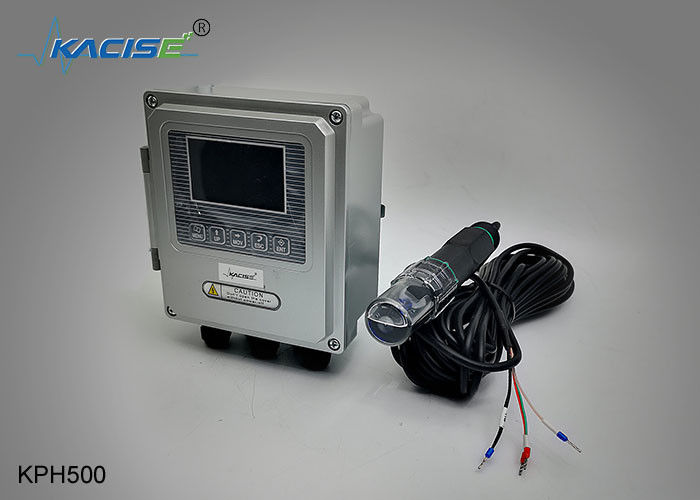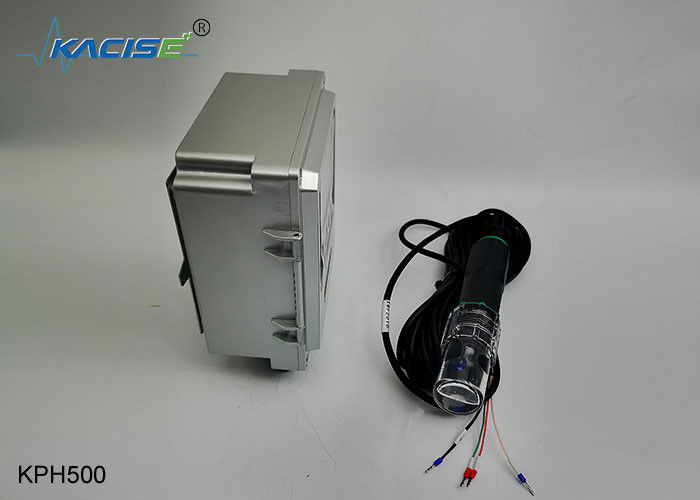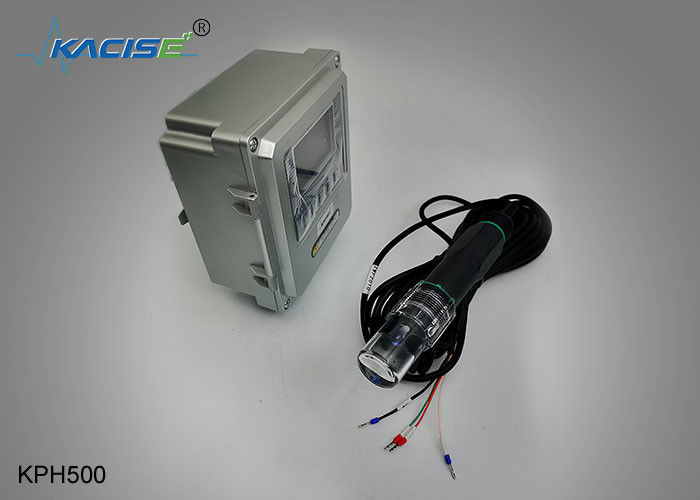Production Introduction
The PH/ORP meter is a precision meter used to detect the pH/oxidation-reduction potential of liquids. It is designed with a microcomputer based on the principle of the primary battery and is simple to operate and easy to maintain. Not affected by color, turbidity, colloidal substances, oxidants and reducing agents, it is suitable for the determination of various media such as clean water, wastewater, industrial water, chemical reagents, etc., and is widely used in agriculture, environmental protection and industry.
The sensor uses a composite electrode, which can eliminate the influence of the inconstant "K" value,
A long-term, stable and accurate measurement of PH is realized. The internal structure of the sensor is shown on the right.

Features
1. LCD display, Chinese menu operation, stable performance and strong reliability
2. High-performance operational amplifier, ORP positive and negative poles are symmetrical, small drift, high accuracy
3. Data is not lost after power off
4. Dual 4-20mA transmission output, relay high and low alarm control output, RS485 communication
Output
5. Simultaneous display of PH value, temperature value, output current value, high alarm value, low alarm value
PH/ORP size structure chart
Host size

Sensor size

PH/ORP technical parameters
| Class | Performance | PH parameter | OPR parameter |
| Host | Measuring range | 0-14PH | -2000mv-2000mv |
| Resolution | 0.01PH | 1mv |
| Precision | 2% Calibration accuracy |
| Operating Temperature | Transmitter 0-65℃ |
| Material | PVC |
| Protection Level | I65/IP67(customized version) |
| Signal Output | 485 communication/4-20mA analog output/support HART protocol/NB.GPRS.LORA Communication (function option) |
| Supply Voltage | AC220V or DC24V (choose one of the two) |
| Power Consumption | <1W |
| Display | LCD Chinese display/TFT color LCD (customized version) |
| Installation Method | Wall mount |
| Sensor | Temperature Compensation | Automatic temperature compensation |
| Protection Level | ip68 |
| Temperature | 0-60℃ |
| Sensor Material | PVC |
| Cable Length | Dedicated PH cable, standard 5 meters (extendable) |
| Operating Temperature | 0-60℃ |
| Storage Temperature | -10-60℃ |
| Installation Method | Bracket drop-in installation |
| Ordering Information Selection Table |
| KPH500 | PH/ORP analyzer |
| Power supply | DC24V |
| AC220V |
| Cable length | 5m |
| 10m |
| 15m |
| 20m |
| Temperature compensation | Sensor without temperature compensation |
| Sensor with temperature compensation |
| Signal output | Only 4-20mA |
| Only 485 |
| Also with 4-20mA , 485 signal output |
| Special custom signal |
| KPH500-P-DC24V-5m-Sensor without temperature compensation-Only 485 | PH host, with DC24V adapter, cable between host and sensor,The cable length is 5 meters, the sensor is equipped without temperature compensation, and is only 485 communication. |
| KPH500-R-AC220V-10m-Sensor with temperature compensation-Only 485 | Optional ORP host, with 220V adapter, line between host and sensor
The cable length is 10 meters, the sensor with temperature compensation, and is equipped with only 485 communication signal output. |
Q&A
What is pH?What is the principle of measurement?
The pH value of the solution is the negative logarithm of the hydrogen ion activity in the solution, which is expressed as:
PH = - lgαH +
Because the value of hydrogen ion activity in aqueous solution is often very small, it is not convenient for application, so the concept of pH value is used
As a solution acidity, neutral and alkaline indicators.Moreover, the pH value can indicate the strength of the acidity and alkalinity of the solution.
In this way, it is very convenient to apply, and thus:
Neutral solution: [H+]= [OH-] = 1X10^-7
Moles per liter, pH is minus lg[H+] is equal to 7
Acid solution: [H+] > [OH -], [H +] > 10^-7Mol /L, pH < 7, the lower the pH, the more acidic;
Alkaline solution: [H+]<[OH-], [H +] < 10^-7Mol /L, pH >7, the higher the pH, the more basic it is.
Activity is the effective concentration, that is, the portion of the ion that is free to participate in a given reaction - that is, to reach the surface of the electrode sensitive membrane to connect to it
The part of the ion that's touching it.Because of the interaction between ions in a solution, the activity is usually less than the concentration, and this interaction will also be
Blocking the movement of ions reduces the number of ions reaching the electrode membrane.
the measurement of pH electrode is the characteristic of corresponding relation between the output potential of galvanic cell and the pH value of solution.
This correspondence can be epresented by Nernst equation:
E = Eo-2.3 RT/F*pH
E = measure the potential
Eo = standard potential
R = the gas constant
T = absolute temperature (K)
F = Faraday constant
RT/F = 2.3 slope
The Nernst equation is a very important relation in electrochemistry.
When measuring pH, Eo(standard potential) and 2.3RT/F(slope) are obtained by electrode calibration. Then the sample is measured to obtain E (measured potential) and the pH value of the sample is calculated by plugging into the equation.
Why does the same sample give different readings on two pH meters?
PH measurement errors are due to pH electrode, pH meter host, and standard buffer.Due to two pH meter calibration conditions are not the same (e.g., correction made at different times), resulting in slightly different measurements, so use the same buffer at the same time.
Two pH meters were used for calibration, and then the pH value of the sample was determined simultaneously.
What is a composite electrode?
An electrode that combines a pH glass electrode with a reference electrode is called a pH composite electrode.The main advantage of the composite electrode is the combination of two
For one, easy to use.The structure of pH composite electrode mainly consists of electrode bulb, support rod, reference electrode, reference solution, shell and liquid
Junction, electrode cap, electrode wire, joint, etc.
Contact us
Website: www.kacise.com
Phone: +86-17719566736
Email: sales@kacise.com
Location: Tangyan South Road, High-tech Zone, Xi'an City, Shaanxi Province, China

 Your message must be between 20-3,000 characters!
Your message must be between 20-3,000 characters! Please check your E-mail!
Please check your E-mail!  Your message must be between 20-3,000 characters!
Your message must be between 20-3,000 characters! Please check your E-mail!
Please check your E-mail! 



